-
 Bitcoin
Bitcoin $117900
0.31% -
 Ethereum
Ethereum $3766
0.28% -
 XRP
XRP $3.176
-0.31% -
 Tether USDt
Tether USDt $1.000
0.00% -
 BNB
BNB $795.6
1.51% -
 Solana
Solana $186.8
-1.09% -
 USDC
USDC $0.9999
-0.01% -
 Dogecoin
Dogecoin $0.2353
-1.33% -
 TRON
TRON $0.3226
1.49% -
 Cardano
Cardano $0.8172
-1.08% -
 Sui
Sui $4.178
3.06% -
 Hyperliquid
Hyperliquid $43.05
-3.39% -
 Stellar
Stellar $0.4367
-0.57% -
 Chainlink
Chainlink $18.62
1.47% -
 Hedera
Hedera $0.2828
6.63% -
 Bitcoin Cash
Bitcoin Cash $584.7
5.65% -
 Avalanche
Avalanche $24.81
2.53% -
 Litecoin
Litecoin $112.8
-0.88% -
 UNUS SED LEO
UNUS SED LEO $8.975
-0.08% -
 Shiba Inu
Shiba Inu $0.00001395
-1.07% -
 Toncoin
Toncoin $3.285
-1.05% -
 Ethena USDe
Ethena USDe $1.001
0.01% -
 Polkadot
Polkadot $4.123
0.76% -
 Uniswap
Uniswap $10.49
-0.18% -
 Monero
Monero $326.5
0.14% -
 Dai
Dai $0.9999
-0.02% -
 Bitget Token
Bitget Token $4.576
0.34% -
 Pepe
Pepe $0.00001247
-1.55% -
 Cronos
Cronos $0.1400
3.77% -
 Aave
Aave $295.1
-0.73%
How to read the long arrangement of moving averages? Can it enhance trend judgment with MACD?
Traders use long arrangements of moving averages, from 10-day to 200-day, to spot trends; MACD enhances analysis by confirming momentum and potential reversals.
Jun 10, 2025 at 12:21 pm
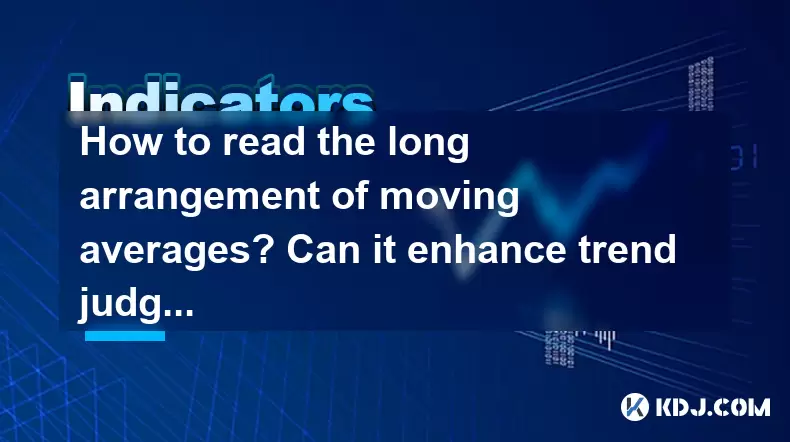
Understanding Moving Averages and Their Long Arrangement
Moving averages are fundamental tools in technical analysis used by traders to smooth out price action and identify trends over a specified period. When it comes to the long arrangement of moving averages, we are typically looking at a series of moving averages with different time frames arranged in a specific order to enhance trend identification. The most common types of moving averages used in this setup are the Simple Moving Average (SMA) and the Exponential Moving Average (EMA).
The long arrangement of moving averages usually involves multiple moving averages, typically ranging from short-term (like a 10-day or 20-day MA) to long-term (like a 50-day, 100-day, or 200-day MA). The idea is to observe how these different moving averages align with one another. When shorter-term moving averages are above longer-term moving averages, it often signals an uptrend. Conversely, when shorter-term moving averages fall below longer-term moving averages, it indicates a downtrend.
Reading the Long Arrangement of Moving Averages
To effectively read the long arrangement of moving averages, one must pay attention to the crossovers and the order of these averages. Here's how you can do it:
- Identify the Moving Averages: Start by selecting the moving averages you want to use. Common choices include the 10-day, 20-day, 50-day, 100-day, and 200-day moving averages.
- Plot the Moving Averages: Plot these moving averages on your chart. Ensure that the shorter-term moving averages are more responsive to recent price changes, while the longer-term moving averages are smoother and slower to react.
- Observe the Order: Check the order of these moving averages. In an uptrend, you'll typically see the 10-day MA above the 20-day MA, the 20-day MA above the 50-day MA, and so on. In a downtrend, the order is reversed.
- Look for Crossovers: Pay attention to when shorter-term moving averages cross above or below longer-term moving averages. A bullish crossover occurs when a shorter-term MA crosses above a longer-term MA, signaling potential upward momentum. A bearish crossover happens when a shorter-term MA crosses below a longer-term MA, indicating potential downward momentum.
Enhancing Trend Judgment with MACD
The Moving Average Convergence Divergence (MACD) is another popular technical indicator that can be used in conjunction with the long arrangement of moving averages to enhance trend judgment. The MACD is calculated by subtracting the 26-day EMA from the 12-day EMA, and a 9-day EMA of the MACD line is plotted as the signal line.
When combined with the long arrangement of moving averages, the MACD can provide additional confirmation of trend strength and potential reversals. Here's how you can use MACD to enhance your trend judgment:
- MACD Line and Signal Line Crossovers: A bullish signal occurs when the MACD line crosses above the signal line, indicating potential upward momentum. A bearish signal happens when the MACD line crosses below the signal line, suggesting potential downward momentum.
- MACD Histogram: The MACD histogram represents the difference between the MACD line and the signal line. An increasing histogram indicates strengthening momentum, while a decreasing histogram suggests weakening momentum.
- Divergence: Look for divergences between the MACD and the price action. Bullish divergence occurs when the price makes a lower low, but the MACD makes a higher low, indicating potential upward reversal. Bearish divergence happens when the price makes a higher high, but the MACD makes a lower high, signaling potential downward reversal.
Combining Moving Averages and MACD for Enhanced Trend Analysis
To effectively combine the long arrangement of moving averages with the MACD for enhanced trend analysis, follow these steps:
- Plot the Long Arrangement of Moving Averages: As previously mentioned, plot the selected moving averages on your chart and observe their order and crossovers.
- Add the MACD Indicator: Plot the MACD indicator below the price chart. Ensure that you are using the standard settings of 12, 26, and 9 for the MACD calculation.
- Analyze the Signals: Look for crossovers in both the moving averages and the MACD. A bullish signal from the moving averages (e.g., 10-day MA crossing above the 20-day MA) combined with a bullish MACD crossover (MACD line crossing above the signal line) can provide strong confirmation of an uptrend.
- Monitor the MACD Histogram: Pay attention to the MACD histogram to gauge the strength of the trend. An increasing histogram alongside a bullish moving average crossover can indicate strong upward momentum.
- Watch for Divergences: Keep an eye out for divergences between the price action and the MACD. A bullish divergence combined with a bullish moving average crossover can signal a potential upward reversal.
Practical Example of Using the Long Arrangement of Moving Averages and MACD
Let's consider a practical example to illustrate how to use the long arrangement of moving averages and MACD for trend analysis in the context of a cryptocurrency like Bitcoin.
- Plotting the Moving Averages: On a Bitcoin price chart, plot the 10-day, 20-day, 50-day, 100-day, and 200-day moving averages. Observe the order of these moving averages.
- Adding the MACD Indicator: Below the price chart, plot the MACD indicator using the standard settings of 12, 26, and 9.
- Analyzing the Signals: Suppose the 10-day MA crosses above the 20-day MA, and the 20-day MA is already above the 50-day, 100-day, and 200-day MAs. This indicates a potential uptrend. At the same time, the MACD line crosses above the signal line, and the MACD histogram starts to increase. These signals together provide strong confirmation of an uptrend in Bitcoin.
- Monitoring for Divergences: As the uptrend continues, monitor the price action and the MACD for any signs of divergence. If the price of Bitcoin makes a higher high, but the MACD makes a lower high, this could be a bearish divergence, signaling a potential downward reversal.
FAQs
Q: Can the long arrangement of moving averages be used for short-term trading?
A: While the long arrangement of moving averages is typically used for identifying longer-term trends, it can also be adapted for short-term trading by using shorter time frames for the moving averages. For example, using a 5-day, 10-day, and 20-day moving average can help identify short-term trends. However, traders should be aware that shorter-term moving averages are more sensitive to price fluctuations and may result in more false signals.
Q: How do I choose the right moving averages for my trading strategy?
A: The choice of moving averages depends on your trading style and time horizon. For long-term investors, using longer-term moving averages like the 50-day, 100-day, and 200-day MAs can be effective. For day traders or short-term traders, shorter-term moving averages like the 5-day, 10-day, and 20-day MAs may be more suitable. It's important to test different combinations of moving averages to find the ones that work best for your specific strategy and the cryptocurrency you are trading.
Q: Is it necessary to use both SMA and EMA in the long arrangement of moving averages?
A: While it's not necessary to use both SMA and EMA, combining them can provide a more comprehensive view of the trend. The SMA gives equal weight to all prices within the period, making it smoother and less responsive to recent price changes. The EMA, on the other hand, gives more weight to recent prices, making it more responsive to recent market movements. Using both can help confirm trends and reduce the likelihood of false signals.
Q: How often should I check the long arrangement of moving averages and MACD for trend analysis?
A: The frequency of checking the long arrangement of moving averages and MACD depends on your trading style. For long-term investors, checking daily or weekly charts might be sufficient. For short-term traders or day traders, checking hourly or even 15-minute charts may be necessary. It's important to find a balance that allows you to stay informed about market trends without becoming overwhelmed by constant monitoring.
Disclaimer:info@kdj.com
The information provided is not trading advice. kdj.com does not assume any responsibility for any investments made based on the information provided in this article. Cryptocurrencies are highly volatile and it is highly recommended that you invest with caution after thorough research!
If you believe that the content used on this website infringes your copyright, please contact us immediately (info@kdj.com) and we will delete it promptly.
- Cryptos to Watch in 2025: Punisher Coin, Chainlink, and the Altcoin Arena
- 2025-07-27 18:30:13
- Bitcoin, Altcoins, Rebound: Navigating the Crypto Comeback Trail
- 2025-07-27 18:30:13
- Ethereum, Bitcoin, and Altcoins: A Shift in Crypto Tides?
- 2025-07-27 19:10:13
- Windtree Therapeutics' Bold BNB Strategy: A $520 Million Crypto Play
- 2025-07-27 19:10:13
- Solana, Staking, and Unilabs: What's the Buzz in the Crypto Space?
- 2025-07-27 16:50:13
- VeChain, HBAR, Remittix: Navigating the Crypto Landscape in 2025
- 2025-07-27 17:10:12
Related knowledge
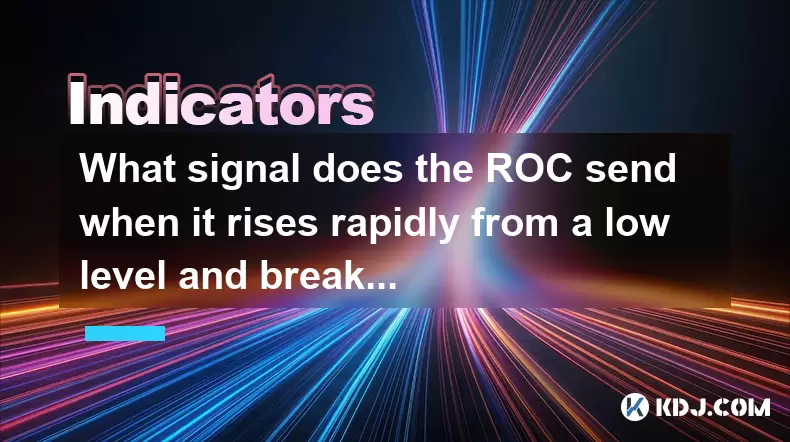
What signal does the ROC send when it rises rapidly from a low level and breaks through the zero axis?
Jul 27,2025 at 10:15am
Understanding the Rate of Change (ROC) IndicatorThe Rate of Change (ROC) is a momentum-based oscillator used in technical analysis to measure the perc...
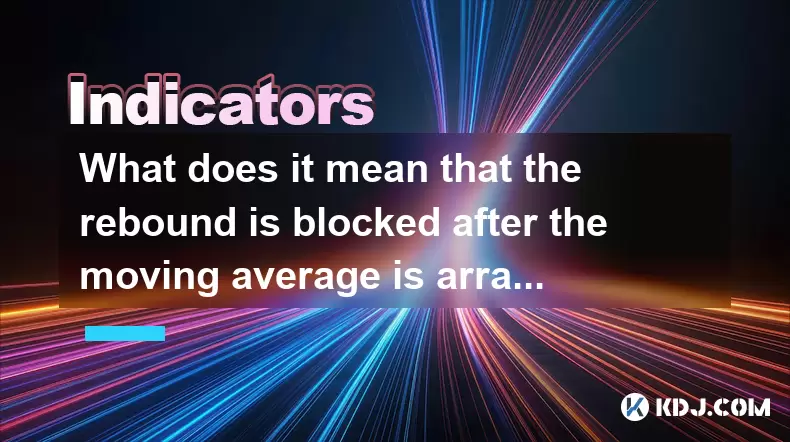
What does it mean that the rebound is blocked after the moving average is arranged in a short position for the first time?
Jul 26,2025 at 10:51am
Understanding the Short-Term Moving Average ConfigurationWhen traders refer to a 'short position arrangement' in moving averages, they are describing ...
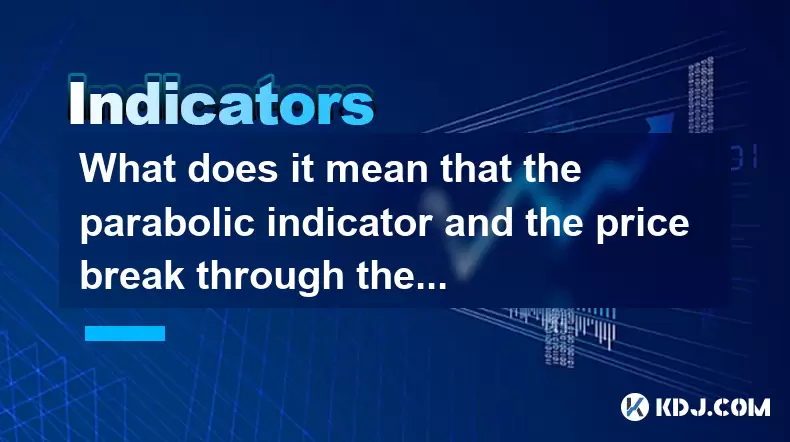
What does it mean that the parabolic indicator and the price break through the previous high at the same time?
Jul 26,2025 at 07:22pm
Understanding the Parabolic Indicator (SAR)The Parabolic SAR (Stop and Reverse) is a technical analysis tool developed by J. Welles Wilder to identify...
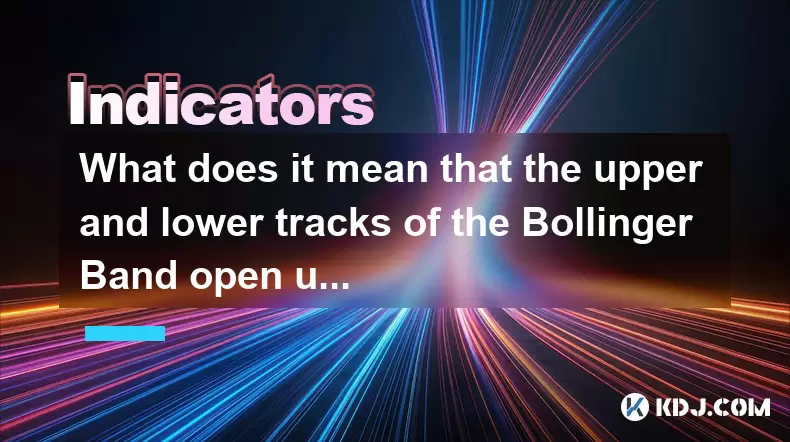
What does it mean that the upper and lower tracks of the Bollinger Band open upward at the same time?
Jul 27,2025 at 02:49pm
Understanding the Bollinger Band StructureThe Bollinger Band is a widely used technical analysis tool developed by John Bollinger. It consists of thre...
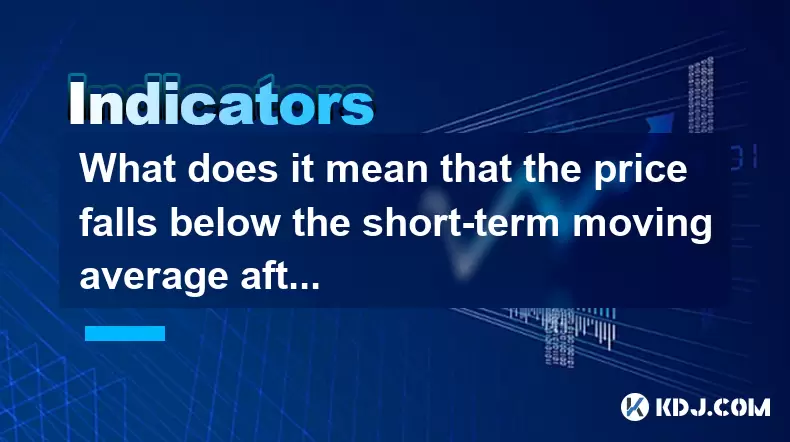
What does it mean that the price falls below the short-term moving average after the RSI top divergence?
Jul 26,2025 at 11:01pm
Understanding RSI Top Divergence in Cryptocurrency TradingThe Relative Strength Index (RSI) is a momentum oscillator widely used in cryptocurrency tra...
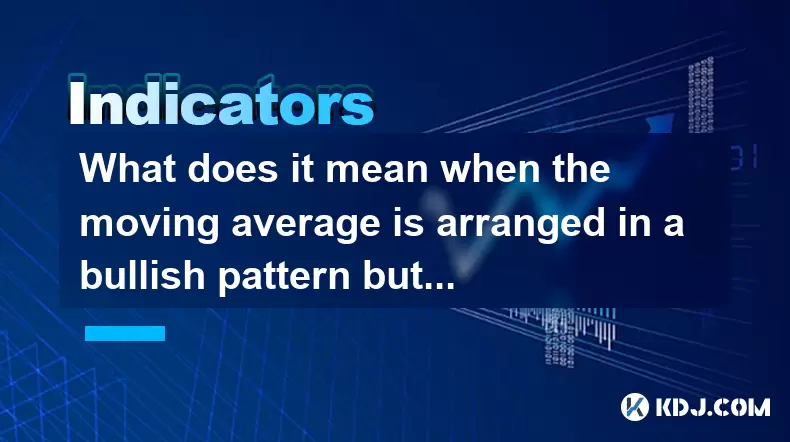
What does it mean when the moving average is arranged in a bullish pattern but the MACD bar is shortened?
Jul 27,2025 at 06:07am
Understanding the Bullish Moving Average PatternWhen traders observe a bullish moving average pattern, they typically refer to a configuration where s...

What signal does the ROC send when it rises rapidly from a low level and breaks through the zero axis?
Jul 27,2025 at 10:15am
Understanding the Rate of Change (ROC) IndicatorThe Rate of Change (ROC) is a momentum-based oscillator used in technical analysis to measure the perc...

What does it mean that the rebound is blocked after the moving average is arranged in a short position for the first time?
Jul 26,2025 at 10:51am
Understanding the Short-Term Moving Average ConfigurationWhen traders refer to a 'short position arrangement' in moving averages, they are describing ...

What does it mean that the parabolic indicator and the price break through the previous high at the same time?
Jul 26,2025 at 07:22pm
Understanding the Parabolic Indicator (SAR)The Parabolic SAR (Stop and Reverse) is a technical analysis tool developed by J. Welles Wilder to identify...

What does it mean that the upper and lower tracks of the Bollinger Band open upward at the same time?
Jul 27,2025 at 02:49pm
Understanding the Bollinger Band StructureThe Bollinger Band is a widely used technical analysis tool developed by John Bollinger. It consists of thre...

What does it mean that the price falls below the short-term moving average after the RSI top divergence?
Jul 26,2025 at 11:01pm
Understanding RSI Top Divergence in Cryptocurrency TradingThe Relative Strength Index (RSI) is a momentum oscillator widely used in cryptocurrency tra...

What does it mean when the moving average is arranged in a bullish pattern but the MACD bar is shortened?
Jul 27,2025 at 06:07am
Understanding the Bullish Moving Average PatternWhen traders observe a bullish moving average pattern, they typically refer to a configuration where s...
See all articles

























































































